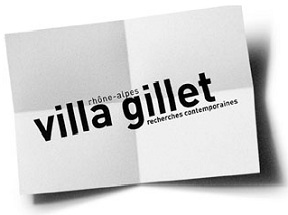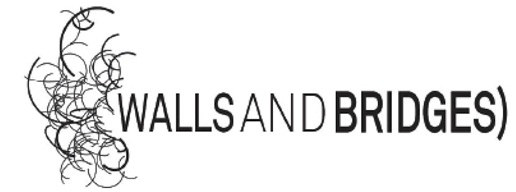For a public service of human augmentation
![[title-image]1332154741964[/title-image] tous droits réservés](https://cle.ens-lyon.fr/anglais/images/hoquet_1357338011188-jpg)
He has published various works on the 18th-century naturalists Buffon and Linné, and edited a special issue of the journal Critique dedicated to mutants (no. 709-710, June-July 2006). With Elsa Dorlin, he co-directed a project on the concept of “sex” in 20th-centry bio-medical science.
His work currently focuses on Darwin, cyborgs, and virility.
Thinking about humanity begins with the myth of Epimetheus and Prometheus: forgotten during the distribution of efficient organs, humans remained naked. While Epimetheus gave claws to some, shells to others, speed or cunning to still others, humans were neglected and ended up the poorest of creatures. To help them provide for the necessities of life and to repair as best he could his brother’s fundamental and foundational omission, Prometheus came to the rescue.
At Prometheus’s school, humans became fire stealers, surrounding themselves with a technical arsenal of tools and instruments. This is also when Prometheus gave humans the political virtues of civic debate to decide together what’s best for the whole city and its future.
But there occurred one of those tricks of which only history knows the secret: what was initially designed to make up for a lack of something better (artifices instead of natural organs) quickly became an advantage. The external instruments humans could acquire through their ingeniousness turned out, through use, to be much more flexible and efficient than bodily organs.
Thus, according to the myth, the human species was defined from the outset in three ways:
(1) as a technical species, the “nature” of which is to resort to tools and artifice and, as such, of which the “nature” is never given;
(2) as an augmented species, the natural endowments of which must be supplemented by numerous acquisitions;
(3) as a polymorphous species, the essential characteristic of which is to escape from specialization and be equipped to deal with all sorts of circumstances—that is, which is not adapted once and for all to a given environment, but that can, using technology, create its environment.
Thus, what makes a human body is not just the contents of its individual DNA, but also the memory of the species and its history: the transmission from generation to generation of tools and know-how, of an entire physical culture and body language. Ethological research has shown that humans are certainly not the only species to have received a share of technology and culture: everywhere there are signs of an animal “culture.” Not only humans, but all organisms naturally extend themselves through technology.
More broadly, numerous organisms produce silk cocoons or webs, others burrow holes or warrens, still others make nests or dams. In short, there is a full range of animal architecture.
Many such animals are builders, and expand their organisms through various artifices. A wasp looking for a caterpillar on which to lay its eggs is in fact doing the same thing: it is using the body of the caterpillar as an external organ, according to the logic of tools and machines (which Canguilhem described as “external organs”).
I propose to call this first tableau “Organorg.” The organorg is a placidly tooled organism, naturally extended through artifice (artefacts in French) in a non-problematic way. Like a chimpanzee using a stock to draw a sugar cube that has fallen far from its cage closer to it; or like a human using a hammer to drive a nail. We take the tool, do what we need to do with it, then put it down. Above all, an organism is always, in theory, an Organorg: technology is never independent, it’s a life-support strategy piloted by an organic subject that conceived it to accomplish, better than the subject can, the tasks the subject ascribes to it.
But I don’t think the Organorg says everything about contemporary relationships of organisms to technology. This first tableau is incomplete.
The human that is being supplemented and augmented in all sorts of ways (through technology in a broad sense, which includes medicine and politics) reveals its defects: the external devices do what it cannot do, and correct Epimetheus’s original omission. But at the same time, the organism remains the vital center from which all the rest takes its energy; it is master of its artificial creatures. The augmented human knows how to feint: it renders itself natural by pretending to be of the same substance as the species.
The logic of technical augmentation has reached a particular degree in our species, such that technology today is the principal way in which humans evolve and adapt to new environmental challenges. Vaccines are an example of a technical shortcut that enables organisms to adapt very quickly to the challenges of external viruses: much more quickly than strictly organic evolution would. Technology relies on the organism and relays or amplifies it.
Today, technology does more than supplement. But this transition, from Organorg to another model, is not always obvious. In fact, technology hides its most revolutionary aspects and its intervention in our daily lives; it knows how to be modest: it makes itself invisible by taking the form of repaired human beings, or even human beings restored to themselves and their dignity. As for prostheses or exoskeletons, it only wants to make the life of amputees and tetraplegics easier. Technology is thus what finishes humans, but “finish” has an interesting ambiguity: does it mean to complete, or to put an end to?
In fact, the technical situation of humans, the original and somewhat impassable situation of Organorg, is today extended or revisited in three ways, the meanings of which we must ponder. These new tendencies are embodied in a second tableau, which we’ll call Cyborg.
First of all, it is no longer simply the missing functions that machines can add or enable us to acquire. We must now admit that the body itself has proven to be defective: not only through illness, but also through aging and death, which are interpreted as the most fatal of illnesses. Descartes promised us “[we would] avoid the discomforts that age brings,” provided “God gave [us] enough science.” To consider aging and death as illnesses is to show that our organic body is fallible—and to see in the constant threat of this potential failure the very source of human beings’ technical ingeniousness and veritable religion of technology.
In every way, artifice is competing with the organism: it is no longer a question of merely acquiring new functions, but of questioning the value of the organism. The idea is not to complete the organism and enable it to do what it doesn’t yet do. The issue is now whether we shouldn’t simply replace the organism instead of merely prolonging or extending it. The question arises during surgery: when doctors have replaced an organic heart with an artificial heart, they have shown that medicine’s sole purpose is no longer to restore natural functions by providing support for the organic; it can now aim to replace the organ, perhaps to the point of doing without it. This leads to the so-called “transhumanist” suggestions that incarnation is an accident we could do without, a contingency we should get rid of. Robotician Hans Moravec (born in 1948) has become the icon of this project: according to him, we should think about downloading people onto chips—the body has become null and void, only our mental “program” makes up our person. The idea would be to eliminate the body, like a set of corrupt and putrid chairs, and carry our person around in a silicon temple, the idea being that carbon molecules are perhaps not the best material for sustaining life.
When a runner like Pistorius is admitted into the Olympic Games, prostheses become desirable. One wonders whether it wouldn’t be better to be “meca” rather than “orga.”
Secondly, on the model of an organic transplant, equipment aspires to become more than simply a detachable, separate addition. In many ways, it now pretends to be a transplant, that is, to integrate into our bodily economy as a necessary part. Here, the Walkman and the so-called “mobile” or “portable” phones are excellent examples: equipment is becoming increasingly miniaturized and can not only be carried by hand, but quite simply inserted into our organism. Thus, at the very end of the 20th century, the cybernetician Kevin Warwick implanted a computer chip into his arm that piloted various functions in his laboratory (opening doors, making coffee, etc.). From this we can understand that all our beautiful equipment aspires to enter the body: the “external organs” hope to become, simply, organs.
On the one hand, this is merely technology’s natural tendency toward miniaturization. But it’s more than that. The Google Glass project shows that miniaturization is not everything: technology modifies our senses, pretending to become part of our body’s structure. This is not without arousing a feeling that the organism’s identity and integrity have been violated. The human body has become, perhaps, the last “wilderness”: it alone still escapes, at least in its details, from government control, from management, from predatory capitalism. Allowing machines, no matter how fine and complex, into the organism is to subject the body to the type of dependence we know we have on machines. It is also to open up our bodies, which are the heritage of historical evolution, to obsolescence. If I have myself injected with nanorobots to help with my blood circulation today, tomorrow there will already be new generations of better bots ready to make my equipment look cheesy.
We must therefore imagine a public, democratic service of augmentation!
Thirdly, another field in which Cyborg replaces Organorg is perhaps that of reproductive technology, which turn a fœtus into a complete Cyborg. We can say that assisted reproductive technologies (ART), like in vitro fertilization (IVF), etc., make our very survival dependent on a techno-scientific arsenal. But after the moment of conception, the existence of the fœtus is mediatized by technology through a sonogram. Similarly, the delivery and survival of babies are today closely related to a certain number of surgical techniques, from cutting the umbilical cord to cesarean section and the use of forceps. Thus, reproduction is becoming increasingly dependent on medicine, and there is no way to go back: under no circumstances can we return to complete “naturism” (Nature, and nothing but Nature).
The human species is therefore one that does not have an unambiguous definition. Just as its nature is not given once and for all, its definition is not easily embraced or summarized. Humans are always working, and we know that it is through this work that humanity realizes itself or loses itself. Whatever the case, for us, we need to live—that is, to face the perils of incarnation.
This is why we must create a public service of augmentation: a democratic arena in which technical decisions concerning the human beings of tomorrow will be discussed.
Cette ressource a été publiée dans le cadre de la quatrième saison du festival "Walls and Bridges", organisé par la Villa Gillet, qui s'est tenu à New York du 11 au 20 octobre 2012.
Pour citer cette ressource :
Thierry Hoquet, For a public service of human augmentation, La Clé des Langues [en ligne], Lyon, ENS de LYON/DGESCO (ISSN 2107-7029), janvier 2013. Consulté le 15/01/2026. URL: https://cle.ens-lyon.fr/anglais/litterature/entretiens-et-textes-inedits/for-a-public-service-of-human-augmentation



 Activer le mode zen
Activer le mode zen


